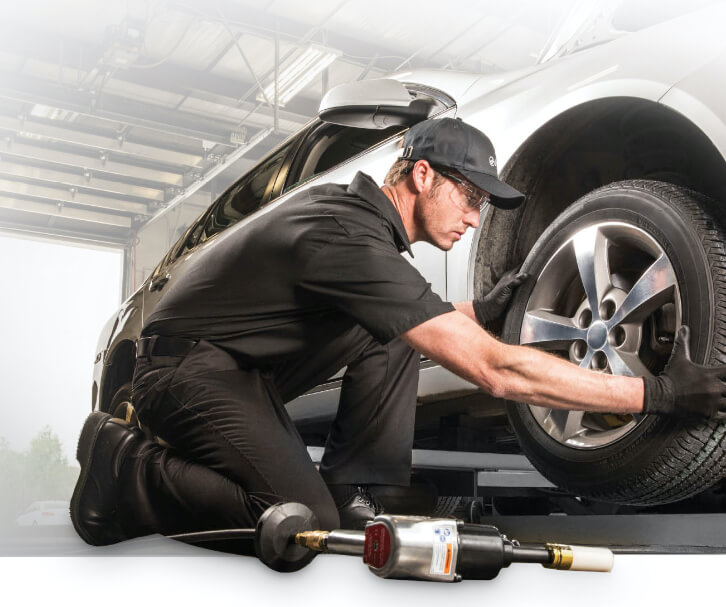Morris Tire: Your Trusted Local Tire Experts
Morris Tire: Your Trusted Local Tire Experts
Blog Article
Tire Repair Myths Debunked: Dividing Reality From Fiction
In the realm of automobile upkeep, tire fixing holds a considerable location, yet it is frequently shrouded in misconceptions and misunderstandings that can bring about confusion for lorry owners. Comprehending the distinction in between truth and fiction when it involves tire repair is important for guaranteeing both security and cost-effectiveness. From the false impressions surrounding patching versus connecting a pierced tire to the performance of different tire sealers, there are numerous key areas where clarity is needed to make educated decisions. Allow's clarify some common tire repair service myths and different them from the reality to encourage you with the expertise required to navigate this essential facet of automobile maintenance.
Typical Tire Repair Misconceptions
Resolving prevalent misconceptions bordering tire repair is essential for preserving road security and expanding the long life of your car's tires. One typical misconception is the idea that a pierced tire is beyond repair work and must be changed entirely. In truth, numerous slits can be efficiently repaired by a specialist, complying with market criteria. It is vital to recognize that not all punctures are created equal; while some may indeed call for a tire replacement, the majority can be securely fixed.
One more misunderstanding is the idea that a DIY tire repair service kit is a sufficient remedy for all tire issues. While these kits can be convenient for temporary fixes in emergency situations, they are not a permanent solution and might not attend to the underlying trouble (morris tire service). Looking for the competence of a qualified tire service technician is constantly suggested to make sure the security and honesty of the tire

Can You Fix a Punctured Tire?
Repairing a pierced tire is an usual practice in the vehicle market, often performed by professional technicians adhering to details guidelines and criteria. Not all slits can be repaired. The location, size, and intensity of the puncture are essential factors in identifying if a tire is repairable. Slits located on the walk area of the tire are generally repairable as long as they are within a specific dimension restriction and do not influence the tire's structural integrity.
It is essential to note that punctures near the sidewall or shoulder of the tire are normally not repairable as a result of safety problems. Such locations undertake considerable tension and flexing, making repair services undependable and potentially harmful. Additionally, if the puncture is also big, surpassing the recommended repairable size, or if the tire shows signs of internal damage, it is much safer to replace the tire entirely.
The Reality About Patching Vs. Connecting
When thinking about the fixing of a punctured tire, understanding the differences between patching and plugging is important for making informed choices regarding tire upkeep and security. Covering includes repairing the tire from the inside, where a patch is related to cover the puncture. This approach is considered even more trusted and durable as it attends to the damage inside, decreasing the threat of air leak and additional tire damages. On the other hand, plugging is a fast solution that entails placing a rubber connect into the pierced location from the exterior. While connecting is practical and can be done without getting rid of the tire from the rim, it is generally thought about a temporary option and may not supply the exact same level of durability as a spot.
Misconception: All Tire Sealants Work

When choosing a tire sealant, take into consideration aspects such as the size of slits it can efficiently fix, compatibility with tire pressure surveillance systems (TPMS), and whether it is risk-free for the tire material. Reading reviews and looking for recommendations from specialists can assist you make a notified decision. In addition, routine maintenance and timely substitute of sealant can aid make certain optimal efficiency. Keep in mind, while tire sealants can be useful in emergencies, they are not a replacement for proper tire treatment and upkeep.
Best Practices for Handling Apartment Tires
Because of the varying performance of tire sealers, understanding best practices for handling punctures is essential for maintaining roadway safety and security and lorry efficiency. When encountering a flat tire, the very first step is to securely draw over to the side of the roadway, far from oncoming website traffic. Transform on hazard lights to inform other chauffeurs of your scenario. It is suggested to apply the emergency brake and place wheel wedges under the tires to stop the discount tires morris il vehicle from rolling. Next off, consult your vehicle's manual to situate the spare tire, jack, and lug wrench. Prior to attempting to change the tire, ensure that the area is level and stable. Loosen the lug nuts, elevate the vehicle with the jack, eliminate the lug nuts and puncture, and replace it with the spare tire. Tighten the lug nuts in a star pattern, reduced the automobile, and firmly tighten the lug nuts. Store away the flat tire, devices, and equipment, and bear in mind to inspect the spare tire's stress occasionally. Following these ideal practices can assist you handle punctures successfully and safely.
Conclusion
Finally, it is important to separate reality from fiction when it involves tire fixing misconceptions. Understanding the truth concerning patching vs. plugging, the efficiency of tire sealants, and finest practices for handling flat tires can assist make sure the safety and long life of your tires. By disproving usual false impressions and complying with correct fixing guidelines, you can make enlightened decisions when it concerns preserving the wellness of your vehicle's tires.
Report this page